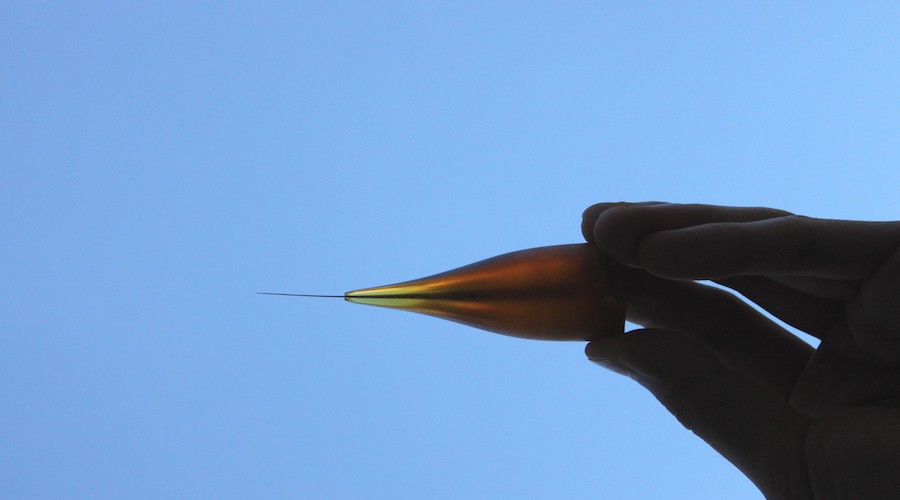Platinum, copper, nickel alloy may be key for smart biomedical devices

Researchers at the Ecole Polytechnique Federale de Lausanne in Switzerland have used an amorphous metal alloy composed of platinum, copper, nickel and phosphorous to make electrodes for plastic fibres.
The idea behind their work is that these electrodes are incorporated into biomedical devices such as chronic implants and electronics.
“Our metallic glass is part of a new category of metals with an amorphous structure,” Inès Richard, one of the scientists involved in the project, said in a media statement. “When the alloy is heated to a certain temperature, it first turns viscous and then becomes crystalline and solid.”
The Pt-Cu-Ni-P alloy allowed the team at the Ecole to create the electrically conductive fibre that is just 40 nanometers thick
Richard explained that while the alloy is in a viscous state, it can be stretched into a nanometric-sized, uniform shape that runs the length of the fibre. That’s a step up from the crystalline metals that are normally used, which are stretched while in a liquid state and can break into droplets if their diameter gets too small.
But the Pt-Cu-Ni-P alloy allowed the team at the Ecole to create the electrically conductive fibre that is just 40 nanometers thick – that’s about 50 times smaller than a standard electrode fibre.
To see what else the fibre could do besides transport electric current, the scientists added liquid selenium during the production process, which didn’t mix with the alloy because the latter is viscous. Since selenium can detect light, it created a new interface that enhanced the fibre’s performance and sensitivity.
In collaboration with other researchers, Richard and her colleagues came up with a method for integrating the electrodes into chronic implants. Then, they tested the fibres on lab rats by sending electrical impulses directly into their brains, which caused them to move, corroborating the potential usefulness of the materials in the medical field.
More News
{{ commodity.name }}
{{ post.title }}
{{ post.date }}

Comments